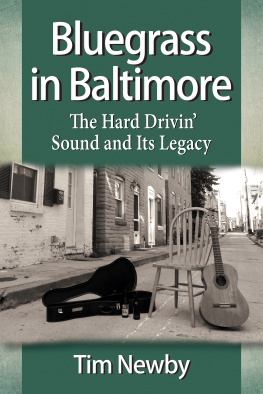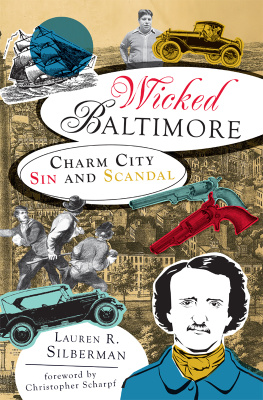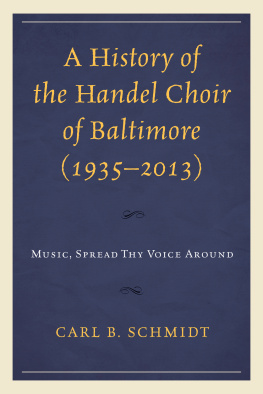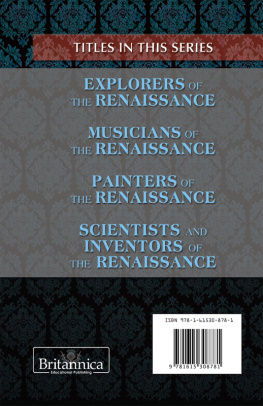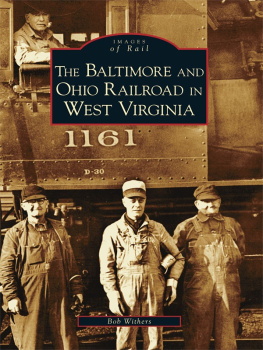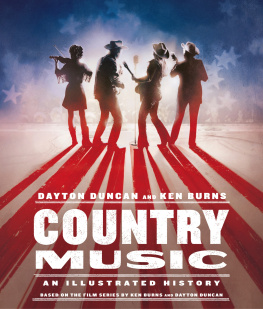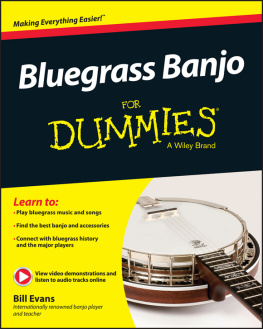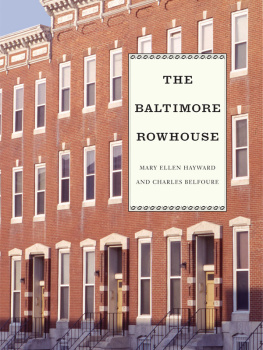
Bluegrass in Baltimore
The Hard Drivin Sound and Its Legacy
Tim Newby

McFarland & Company, Inc., Publishers
Jefferson, North Carolina
LIBRARY OF CONGRESS CATALOGUING DATA ARE AVAILABLE
BRITISH LIBRARY CATALOGUING DATA ARE AVAILABLE
e-ISBN: 978-1-4766-1952-1
2015 Tim Newby. All rights reserved
No part of this book may be reproduced or transmitted in any form or by any means, electronic or mechanical, including photocopying or recording, or by any information storage and retrieval system, without permission in writing from the publisher.
Cover image Tim Newby
McFarland & Company, Inc., Publishers
Box 611, Jefferson, North Carolina 28640
www.mcfarlandpub.com
Acknowledgments
Every good story needs a voice to tell it and this story had many good voices. I would like to thank everyone who took time to meet with me, chat on the phone, or share some thoughts by email about their time and experiences playing music in Baltimore. My extreme gratitude and thanks go to Jordan August and Phil Chorney and the Charm City Folk and Bluegrass Crew, Anders Beck, Sam Bush, Hugh Campbell, Jerimy Campbell, Heather Coffey, Roy Cole, Steve Cunningham, Arnold Buddy Dickens, Tom Ewing, Carl Fleischhauer, Dave Frieman, Alice Gerrard, Chris Hillman, Ed Hough, Cris Jacobs, Travis Kitchens, Patrick McAvinue, Dwight McCall, Del McCoury, Jerry McCoury, Chris Pandolfi, James Reams, Jeff Roberts, Dean Sapp, Ron Cohen, Aaron Smithers and Matt Turi at the Southern Folklife Collection at the Wilson Library at the University of North Carolina at Chapel Hill, Caleb Stine, Carroll Swam, Hank Schwartz, Tony Trischka, Chris Warner, Artie Werner, and Pete Wernick.
Extra special thanks go to Russ Hooper and Sandy Rothman for the time and immense help they provided. Their thoughts, contributions, and contacts were key in helping me with this project.
I would like to thank and recognize the bands, musicians, and people who have made and promoted music in Baltimore over the years and continue to do so today. Without your music and inspiration there would be no story to tell: Bob Baker and the Pike County Boys, Walt Hensley, Earl Taylor and the Stoney Mountain Boys, Del McCoury, Jerry McCoury, Russ Hooper, Jim McCall, Alice Gerrard and Hazel Dickens, Mike Seeger, Frankie Short, Sr., Jon Glik, Kimball Blair, Dee Gunter, Hoppy Ledford, Chris Warner, Bluestone, Mike Munford, Jack Cooke, Warren Blair, Windy Ridge, the Bridge (Cris Jacobs, Kenny Liner, Dave Markowitz, Mike Gambone, Patrick Rainey, and Mark Brown), Caleb Stine and the Brakemen, Dave Hadley, Mookie Siegel, Dave Giegerich, Arty Hill, Ed Hough, Patrick McAvinue, Smooth Kentucky, Wye Oak, Beach House, Future Islands, All Mighty Senators, Lake Trout, Pigeons Playing Ping-Pong, Brad Selko and the Hot August Music Festival, Believe in Music, Charm City Folk and Bluegrass Festival, Feinwood, Chester River Runoff, Lower Case Blues, Honey Dewdrops, Yellow Dubmarine, Freedom Enterprise, Country Devils, Baltimore Bluegrass Band, Satyr Hill Band, Bald Head Mountain, and Cara Kelly.
Thanks go out to the email group for their thoughts, opinions, and critiques of the work in progress. Thanks to Jesse Fendya, Doug Martin, Pat Ryan, John Skozilas, Paul Skozilas, and Matt Sprow.
To my parents and my parents-in-law, thanks for all you do.
And finally to my wife, Melissa, thanks for the unlimited support, help, and encouragement you gave me through this whole process.
Preface
The inspiration for this book was born from an interview I conducted with Del McCoury for an article I was working on for Honest Tune magazine. Through the course of our conversation, Del spoke of his early formative years as a musician in Baltimore. I had a vague knowledge of the deep history that bluegrass music had in Baltimore, but through my conversation with Del I learned just how deep that history was. As a long-time Baltimore resident and huge fan of the city, it always excites me to be able to dig into a topic about my hometown that I am also so passionate about. Over the couple of weeks following the interview I began to casually research this rich history. Seemingly every conversation at the time with my wife started with my saying, You are not going to believe this, or You know that building on Chapel Street by where you used to live, and ended with a new nugget of Baltimores bluegrass history that I had recently stumbled across. After a couple of weeks, my wife made a simple yet obvious observation: This sounds like it would be a great book. You should write it. And she was right.
Baltimores rich bluegrass history is woefully under-documented. Noted country music historian Bill Malones pair of books2008s Working Girl Blues: The Life and Music of Hazel Dickens and 2011s Music from the True Vine: Mike Seegers Life and Musical Journeyprovided some of the best documentation of the formative years of bluegrass in Baltimore with the chapters that focused on Dickens and Seegers time in the city. With a lack of published material on the history of bluegrass in Baltimore I turned to the Baltimore Sun newspaper, which over the years had done a good job profiling some of the better-known bluegrass musicians in the area. Another great source of information about the early years of these pioneering musicians in Baltimore proved to be the liner notes of the various albums they released or appeared on. Many of the Seeger-produced albums released at this time included lengthy bios of the performers.
I started compiling lists of people to try to speak with. It was difficult at first, as many of the original players in the bluegrass scene in Baltimore from the fifties and sixties were no longer alive or older and tough to track down. I soon made contact with Carroll Swam, who first became immersed in the downtown bluegrass scene while a student at what was then known as Towson College, now Towson University. We met on a chilly Presidents Day in a house he was rehabbing near my neighborhood of Canton in Southeastern Baltimore, not far from the where the infamous Chapel Caf once stood. A cold breeze was blowing through the unfinished house. With a cup of coffee in hand Swam proved to be an invaluable starting point, as he recounted tales from the glory years, those early years of bluegrass in Baltimore. Through his stories he introduced me to an intriguing cast of characters such as Ray Davis, Earl Taylor, Walt Hensley, Marvin Howell and Russ Hooper. Previously these were just names in a story, but after my conversation with Swam they were now more than that. They had personalities and rich colorful histories. Swam got me in contact with one of those characters, Dobro player Russ Hooper.
Russ has been a constant part of the bluegrass scene in Baltimore since his days as a teenager in the early fifties, and he would become a fountain of knowledge and one of my greatest resources as I plowed through this project. He was always available to take my call, answer a question, respond to an email, point me in the right direction, and help connect me with many of the past greats from Baltimore.
The help and guidance of West Coast bluegrass icon Sandy Rothman must also be acknowledged. Sandy is originally from the bay area in California, and still resides there; but he, along with his good friend Jerry Garcia, discovered the sounds emanating out of Baltimore via Mike Seegers highly influential 1959 album
Next page
